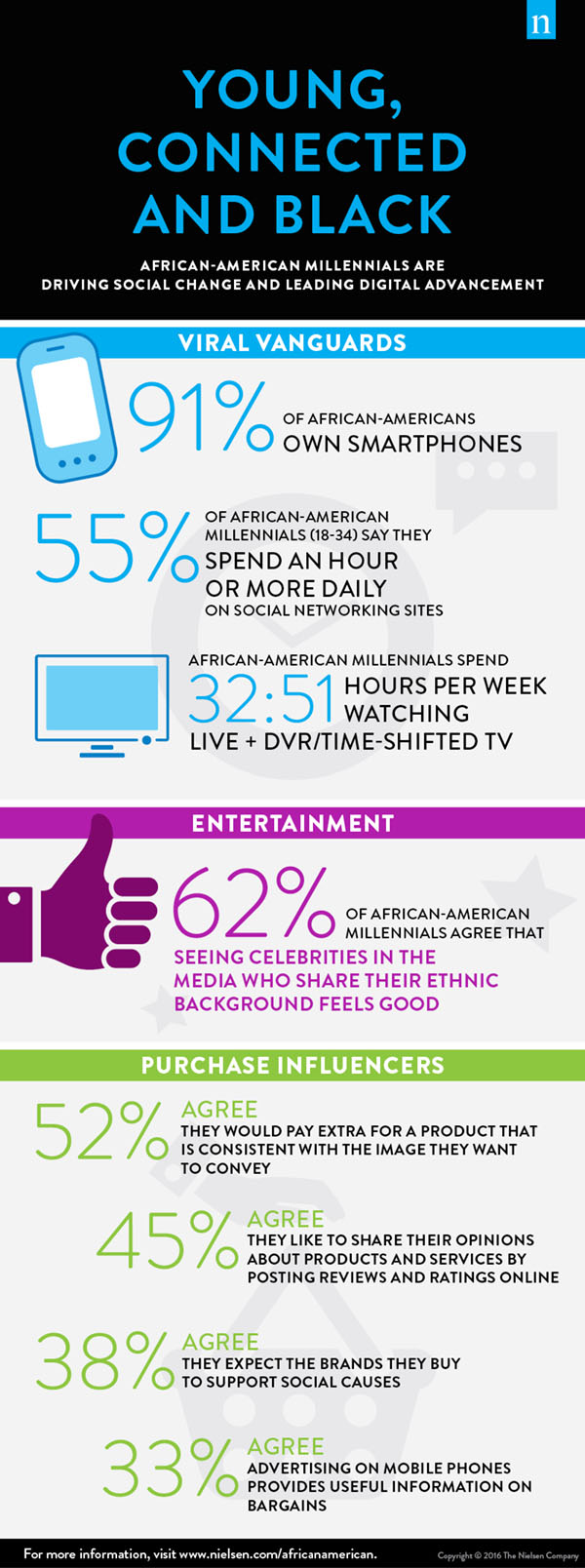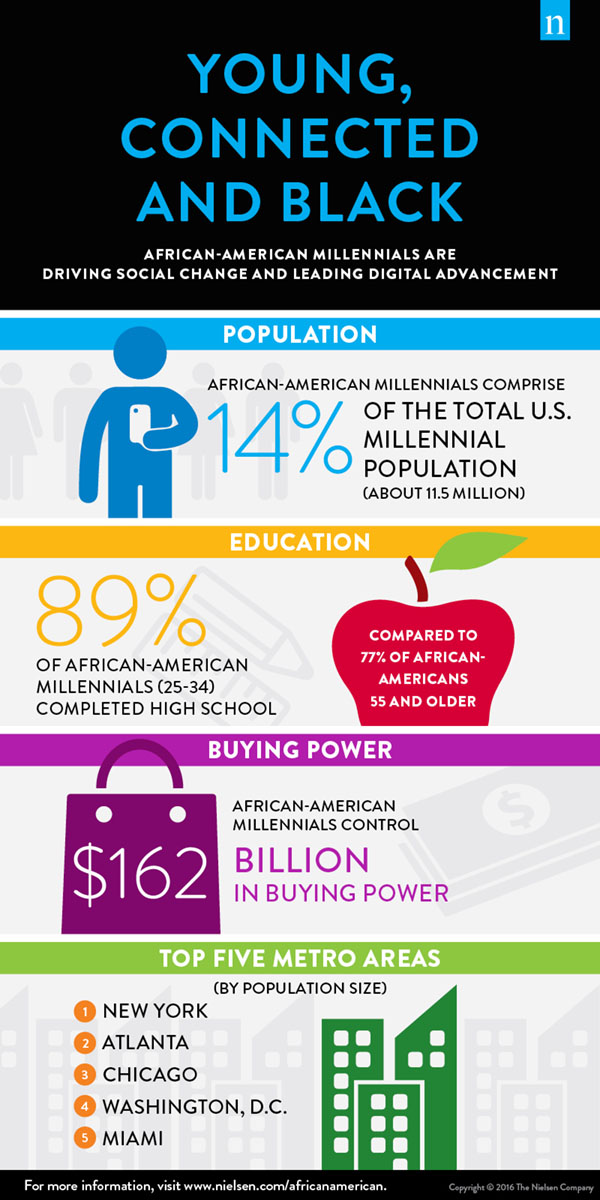Nielsen released a report full of data regarding black millennials today, and you should probably read it. It analyzes how we interact with technology, social media, television, the entertainment industry and unique spending habits.
TL:DR; We’re leading the cultural charge and using technology and representation to break barriers and create new opportunities.
Check out some of the major takeaways below:
African-American millennials are 14 percent of the total millennial population in the U.S. and 25% of the total black population
Technology

91% of black people own smartphones — and we’re the second-largest multicultural group regarding smartphone ownership. Social networking sites are a major tool for interacting with our peers, staying in tune with news and entertainment and yes, even social justice. That being said, 55% of black millennials spend at least one hour per day on social networking sites, which is 6% higher than all millennials.
Entertainment
We watch about 12.5 more hour of tv per week than the overall number for millennials, coming in at nearly 33 hours (both live and recorded television). And when watching TV, we want to see celebrities who look like us and come from similar backgrounds.
Four of the top network TV shows among African-American millennials (Empire, Scandal, Love & Hip-Hop Atlanta 5 and How to Get Away With Murder) have black creators, co-creators or executive producers and black casts or leading characters.
Education
Black women are leading the charge in education, holding 65% of bachelor’s degrees, 70% of master’s degrees and 64% of doctorate degrees awarded to black Americans.
And 70.9% of African-American recent high school graduates enrolled in college (compared to 67.3% of white recent high school graduates) according to the U.S. Bureau of Labor Statistics.
Buying power

Black millennials have $162 billion in buying power, and the black population in general had $1.2 trillion in 2015, projected to hit $1.4 trillion by 2020.
Black households with income less than $25k dropped from 43% to 37% between 2004 and 2014. In that same time period, the number of black households with $50-75k increased 18% (compared to 2% of total U.S.) and with $100k+ increased 95% (compared to 66% of total population).
And we’re purposeful with where we spend our money. More than half of African-Americans would pay extra for a product that is consistent with an image we want to convey, 38% expect the brands we buy from to support the social causes we care about, and 45% will share our opinions online after purchasing a product or service.
62% of African-Americans buy based on quality, 77% will stick to a brand we like and 66% will buy from a company we already trust, even if the price is higher. But we won’t ignore a good deal. 70% of African-Americans agree that store brands can be just as effective as name-brand products, so brands shouldn’t assume we’ll buy their product off of brand loyalty alone.
And black entrepreneurship is thriving, too. Businesses owned by black women make up 59% of all black businesses, a 67% increase since 2007.
Our power in the future
The election is coming up, and as seen in the 2012 election, African-Americans had the highest voter registration and turnout of any demographic in the U.S. This is why black voters are so important for candidates to address and listen to.
Overall, African-Americans are the most optimistic segment about the future. 49% believe the U.S. is headed in the right direction, but we also recognize and are vocal about the work that still needs to be done. We want housing, quality healthcare, childcare, college and healthy food — all of which we want to be affordable.
And this optimism and determination shows on a personal level too. 73% of black millennials have a goal to make it to the top of their profession, and 48% of black millennials strive for high social status.
Check out these stats and get even more info about how lit you really are in the full report, available here.
For more content like this, sign up for Blavity’s daily newsletter.

